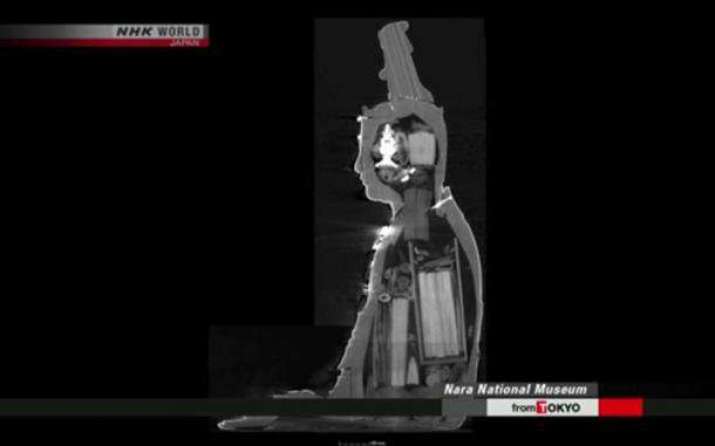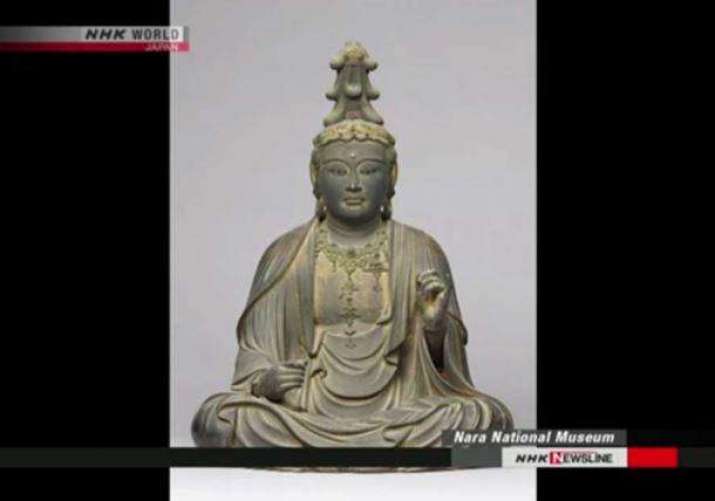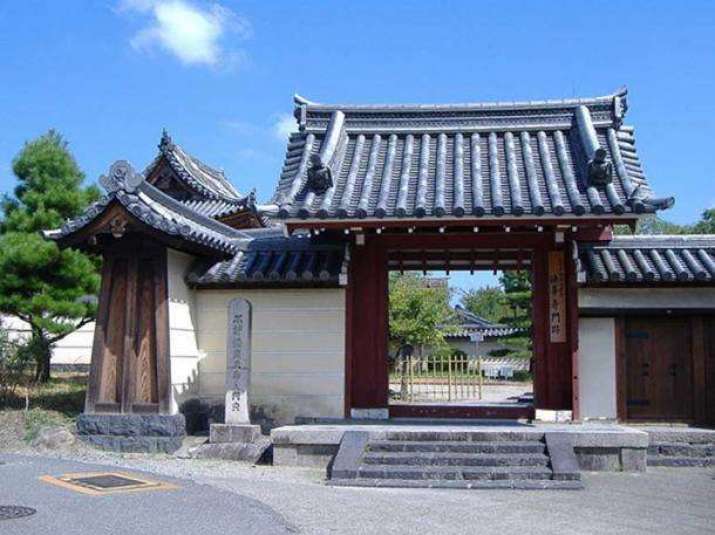NEWS
180 Artifacts Discovered in Ancient Statue of the Bodhisattva Manjushri
 A CT scan shows items hidden inside the statue. From ancient-origins.net
A CT scan shows items hidden inside the statue. From ancient-origins.netA team of experts from Nara National University has discovered about 180 artifacts inside a centuries-old statue of bodhisattva Manjushri, known as Monju Bosatsu in Japan. The statue, which stands just 73 centimetre tall, is thought to be more than 700 years old. The statue is usually be housed at the temple of Hokke-ji in the capital of Japan’s Nara Prefecture, but is currently on display at Nara National Museum until 27 May.
Officials from Nara National Museum found a hollow space the length of the statue when they used a CT scanner to examint the sculpture’s interior. The team discovered around 30 items in the head and some 150 objects stuffed into the body, including scrolls and what appear to be relics. The researchers were granted permission to examine the statue on the condition that they did not damage it or any of the items they might discover.
“In terms of the artifacts inside, the statue is really special,” said Shigeki Iwata, special research chair at Nara National Museum. “The discovery is historically valuable and has increased its value as a cultural asset.” (Newsweek)
 The statue of the bodhisattva, Nara National Museum. From ancient-origins.net
The statue of the bodhisattva, Nara National Museum. From ancient-origins.netAlthough the statue was expected to contain some articles, the high priest of Hokke-ji was surprised at the treasure trove the researchers discovered. The findings raise the question of why so many objects were placed in one statue and why they were subsequently forgotten.
It is quite common for items to be placed inside Buddhist statues. Researchers think the practice was a way to “become closer to Buddha,” and secure enlightenment. (Daily Star)
The items inside the bodhisattva statue are undoubtedly of great historic and archaeological interest, but opening the statue to extract the items risks damaging both the statue and the artifacts. Whether the scientists decide to open the statue and examine its contents remains to be seen.
 The entrance to the temple complex of Hokke-ji in Nara prefecture, Japan. From ancient-origins.net
The entrance to the temple complex of Hokke-ji in Nara prefecture, Japan. From ancient-origins.netIt is believed that the bodhisattva Manjushri chose not to become a Buddha in order to help humanity escape suffering. The bodhisattva is associated with wisdom in Mahayana Buddhism, and is usually depicted as a young man with a flaming sword in his right hand, representing the realization of transcendent wisdom which cuts down ignorance. His left hand holds the Prajnaparamita Sutra, representing his fulfilment of ultimate realization through the blossoming of wisdom.
Hokke-ji was built by the Empress Komyo (701–60) as a nunnery representing her strong dedication to religious life. The temple is a large complex with several halls, gates, and two pagodas. The temple is famous for an eleven-faced wooden image of the bodhisattva Avalokitesvara (also known as Guan Yin in Chinese Buddhism and Kannon in Japanese), which has been designated as a national treasure.
See more
Scrolls found inside statue of Buddha in Nara (NHK World-Japan)
Hoard of Scrolls and Artefacts Discovered in Antique Japanese Statuette (Ancient Origins)
Hidden Treasure: Ancient Buddhist Statue Contains Hoard of Artefacts Including Scrolls (Newsweek)
Buddha secrets revealed: Scientists baffled after artefacts found in ancient statue (Daily Star)
About Hokkeji (Komyo Sect Hokkeji)
Related news from Buddhistdoor Global
Ancient Buddhist Scriptures Found Inside Amitabha Statue in South Korea
Archaeologists Discover Ancient Kiln at the Toshodai-ji Complex in Japan
Ancient Masterpieces of Buddhist Art at Tokyo National Museum
Japanese Archaeologists Unearth Foundations of Ancient Second Capital in Osaka Prefecture
Buddhist Temple in Japan Opens its Doors to Cosplaying Visitors
Related features from Buddhistdoor Global
Origins of the Godai Myо̄о̄
Senso-ji: A Buddhist Temple for the People
The Propagation of Fudō Iconography in Japan
Expressions between Dogma and Silence: A Japanese Take on the Two Truths














